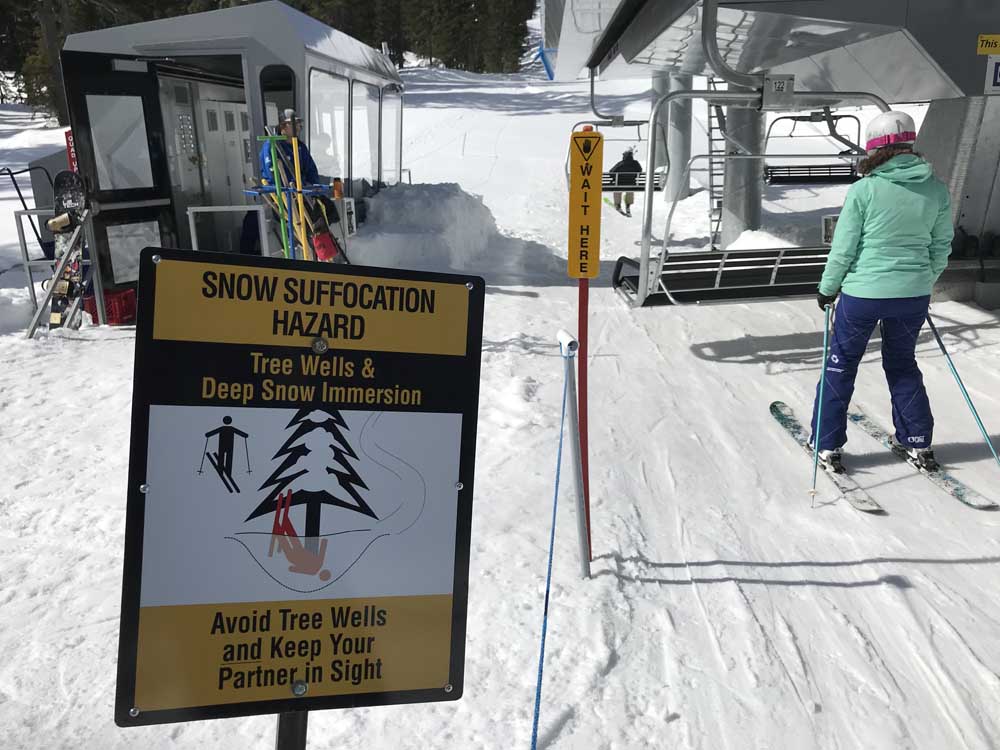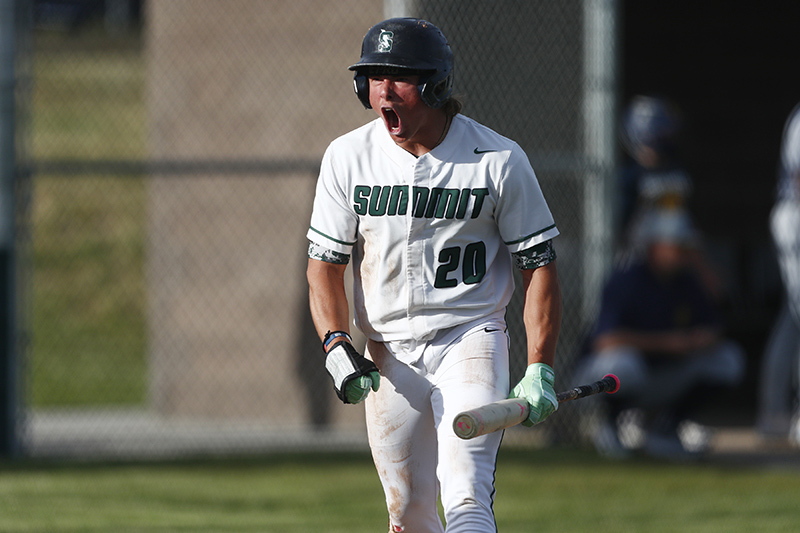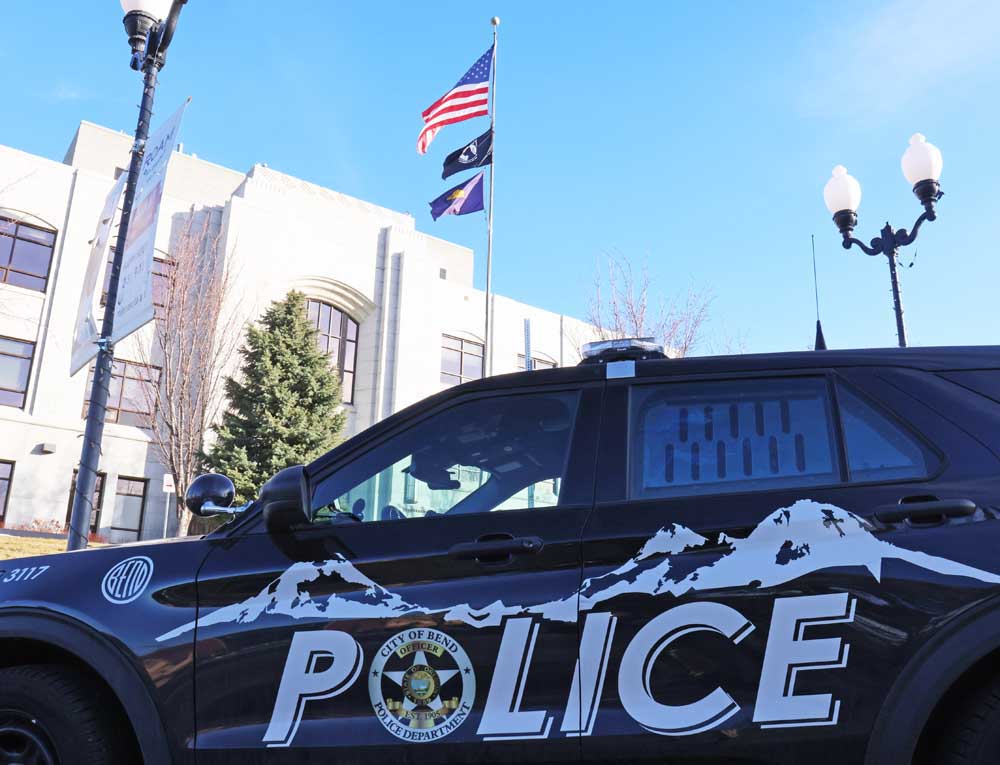Skiing and riding the backside of Bachelor
Published 12:00 am Thursday, March 15, 2018

- New signs at the bottom of the Cloudchaser chairlift warn about the hazards of tree wells at Mount Bachelor.(Mark Morical/Bulletin photo)
MOUNT BACHELOR — The chance to carve deep through untouched powder for turn after turn along wide-open bowls and glades can await skiers and snowboarders on the south side of this mountain.
As more and more snowriders seek a backcountry experience, the south side — commonly referred to as the backside — of Mount Bachelor offers a sort of lift-accessed backcountry.
Trending
The experts-only backside features 2,000 to 2,500 vertical feet of uninterrupted snowriding. Ungroomed and unsigned, and with a limited number of snowriders, the backside includes seemingly endless bowls, followed by powdery routes through the trees, all with a consistent fall line.
“It’s the Holy Grail of powder skiing at Mount Bachelor,” says Tom Lomax, Mt. Bachelor ski area’s director of mountain operations. “That’s all there is to it. It just doesn’t get any better than that when it’s good. I’ve had runs down Larry Valley (a backside bowl) that people would have paid full price to go helicopter skiing.”
From the summit of Bachelor looking south, the view is unsurpassed: frozen Cascade lakes and distant snow-covered peaks highlight the horizon. At the top, the choices of where to ski or ride are endless. But the challenges can seem insurmountable: steep, wind-battered slopes that, depending on the day, can feature potential hazards such as ice chunks, wind slab, breakable crust, or stashes of powder.
Conditions must be fairly clear for the Summit lift and the backside to be open. And even if the Summit chair is running, snow conditions could still keep the backside closed.
“It’s really kind of a backcountry experience that’s accessible from the top of the mountain,” Lomax says. “The terrain has a ton of shape back there because of the way the mountain is shaped. There’s just a lot of terrain, and it can be pretty challenging, conditionswise. The first 500 feet can be pretty wind-affected and icy. And then maybe you get to a section of really great snow in the middle, and then once the sun comes out as you get down lower it can start to get a little thicker. As far as snow conditions go, it could offer a little bit of everything.”
While the backside offers some of the best skiing and riding at the mountain, it can also be one of the most dangerous areas. Tree wells, dicey weather and snow conditions, and the sheer remoteness of the area all add to the risk.
Trending
On March 2, two snowriders were killed in unrelated incidents at Bachelor after falling into tree wells — areas of unconsolidated snow around the bases of trees. A skier died near the Cloudchaser chairlift and a snowboarder died near the West Bowls, which are near the Northwest chairlift and accessible from the backside.
Lomax says tree wells pose no more of a threat on the backside than on any other treed areas of the mountain. But, he adds, the remote location and the lack of signs on the backside increase the peril. If a skier or rider does get injured or lost, he or she can be difficult for ski patrol to find.
Lomax recommends using the “My GPS” app so snowriders can always know their locations (latitude and longitude) by looking at their phones. If they become lost or injured but not disabled, they can call ski patrol or 911 and provide their GPS coordinates.
With GPS coordinates, Lomax notes, ski patrol could reach an injured skier on the backside within 10 minutes. But without the coordinates, it could take much longer.
“You can’t see where people are back there,” he says. “With the trees and the topography, people can totally disappear. If you broke a leg back there, do you want somebody to come find you in 10 minutes or do you want to be sitting there for an hour?”
As for tree wells, the best way to mitigate their danger is to ski or ride with a partner while staying within each other’s sight. That way, if one of the snowriders encounters trouble, the other will see it and can be there quickly to help. The problem is that partners can become separated easily, especially in an area like Bachelor’s backside.
“If I see some powder and drop over a ridge to the next bowl over and we’re not in view of each other anymore, we’re not together,” Lomax explains. “You have to have each other in a visual line of sight. Go one at a time. That’s not how a lot of people are skiing now. A lot of people are skiing together down through these areas and getting separated.”
On the backside, the bowls eventually give way to trees before the west catchline, which skiers must take — and never cross — to get back to the Northwest chairlift. The area in the trees before the catchline can be rife with potential tree-well hazards. Snowriders should always maintain control and slow their speeds to avoid falling.
“Look ahead and look for clear openings,” Lomax says. “Slow down and be prepared to stop before you get near the trees. Adjust your speed for how much you can see in front of you.”
Once they make it through the trees on the backside, skiers and riders must take care to not miss the catchline. Marked every 40 feet with orange bamboo sticks and “Ski Area Boundary” signs, the catchline is seemingly impossible to miss. No matter how far east or west a snowrider goes from the top of the backside, he or she will hit the catchline, which runs 360 degrees around the base of the mountain.
Near the bottom of the Larry Valley bowl, the groomed, gravity-fed catchline is split east and west. Go east, and you will end up at the Cloudchaser chairlift. Head west, and you will find the Northwest chairlift. Cross the catchline, and you are out of bounds — and will likely end up lost.
Last week I made the ride up the Summit chairlift to explore the backside with a small group of skiers and riders. Traversing west, I took in the spectacular views of snow-covered lakes and buttes, and the rolling terrain of the western slope of the Cascade mountains.
Most of the unofficial names of the bowls on the backside are local nicknames from ski patrollers. For example, Larry Valley is named after a former ski patroller and groomer who worked at the mountain more than 40 years ago, before the Summit chairlift’s first season in 1982-83.
West of Larry Valley are the Moe and Curly bowls (think Three Stooges). Deadwood Canyon got its name from the dead hemlock trees bordering the east side of the run.
We dropped in near Deadwood Canyon and the powder was deep right from the top. We carved through untracked snow, maneuvering around the sastrugi: sharp grooves and ridges of snow and ice formed by winds that are common high on the mountain.
Soon thereafter the open bowls gave way to narrow paths through the trees, and at that point — leery of tree wells — I told myself to take it slow. From there, a partner and I skied one at a time to keep each other in sight, while other skiers and riders partnered up as well. We eventually arrived at the catchline to make our way to Northwest.
The backside can make for some memorable runs, but snowriders need to be prepared for a backcountry-style experience, even as they are skiing and riding at a resort. Because as we have recently been reminded, the joy of the mountain slopes can turn to heartache in the blink of an eye.
— Reporter: 541-383-0318,
mmorical@bendbulletin.com








